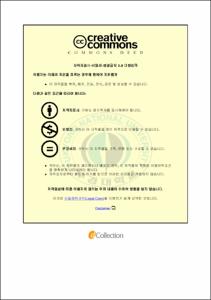원주시 생활폐기물 고형연료화 시설의 에머지 평가
- Alternative Title
- Emergy evaluation of a refuse-derived fuel processing facility in Wonju, Korea
- Abstract
- Abstract
In Korea, wastes are disposed of through landfilling, incineration, and ocean dumping. Recognizing the limited capacity of the environment in treating wastes, the Korean government has adopted a zero-waste society policy in which the generation of wastes is minimized first and then those wastes generated are reused or recycled. The waste-to-energy initiative is one of several initiatives proposed to realize the zero-waste society. The initiative supports development of technologies, such as refuse-derived fuel (RDF) production, biogas extraction, landfill gas recovery, and incineration heat recovery, to extract or recover useful energy from wastes.
RDF is a solid fuel produced by mechanically crushing, separating, drying, and molding combustible solid wastes such as papers, woods, plastics, and the like into a cylindrical form. The RDF processing has recently been recognized as a viable alternative to landfilling and ocean dumping because it could provide a stable source of solid fuels, save landfill capacity by reducing the volume of wastes to be filled. Construction of several RDF processing facilities is underway or planned in Korea.
This study carried out an emergy evaluation on a refuse-derived fuel processing facility in the city of Wonju, Korea, to evaluate the macroeconomic contribution of solid fuels produced and compare its costs and benefits to see if the project were feasible in the emergy perspective. The emergy methodology is a system evaluation tool that uses energy as the common currency to compare different resources on a common basis. The Wonju RDF processing facility uses combustible wastes collected in the city of Wonju to produce solid fuels, with a processing capacity of 80 tons/day. Only direct benefits and costs of the facility were considered in this study because of lack of data and information on the indirect benefits and costs. Direct benefits of the Wonju RDF facility included RDF production and reduced landfill cost, and direct costs considered were costs for construction, and operation and maintenance.
The emergy quantiy in the combustible solid wastes treated by the Wonju RDF processing facility was 1.51?1019 sej/yr and their emvalue was calculated as 5.65 billion em₩/yr. This means that the facility prevented the loss of useful resources with a potential worth of 5.65 billion em₩ in 2007. The facility also contributed to increasing the lifetime of the Wonju Landfill nearby by reducing the amount of wastes to be filled by about 4% of its annual landfill treatment in 2007. Total emergy input required to produce 5,801 ton of RDF was 3.57?1019 sej/yr, resulting in the solar transformity of the RDF of 3.22?105 J/yr. The emvalue of RDF produced in the facility was calculated as 13.4 billion em₩/yr which is the real wealth contribution of the facility to the Korean society. The emergy yield ratio of the Wonju RDF processing facility was calculated as 1.73, implying that the facility contributed more to the economy beyond the investment costs required to construct and operate.
Direct emergy benefits of the Wonju RDF processing facility were calculated as 1.42?1010 em₩/yr and direct emergy costs as 7.75?109 em₩/yr. This gave a net emergy benefit of 6.41 billion em₩/yr for the facility and the emergy benefit/cost ratio was calculated as 1.83. The emergy benefit-cost evaluation revealed that the facility was a feasible project for the solid waste management of Wonju in the emergy perspective. This study suggested that RDF processing facilities could be an effective solid waste disposal alternative in building a sustainable zero-waste society. Further studies are needed to provide better information for the national waste management policy with indirect benefits and costs of RDF processing facilities included in the emergy benefit-cost evaluation.
- Issued Date
- 2010
- Awarded Date
- 2010. 2
- Type
- Dissertation
- Publisher
- 부경대학교
- Alternative Author(s)
- Im, Jin A
- Affiliation
- 부경대학교 대학원
- Department
- 대학원 생태공학과
- Advisor
- 강대석
- Table Of Contents
- I. 서 론 1
II. 이론적 배경 3
1. 자원순환형 사회 3
2. 폐기물 발생 및 처리 5
가. 폐기물 정의와 종류 5
나. 국내 폐기물 발생 및 처리현황 6
3. 폐기물 에너지화 기술 13
가. 폐기물 바이오가스화 14
나. 매립가스 에너지자원화 15
다. 소각장 소각여열 회수 17
라. 폐기물 고형연료화 17
4. 폐기물 고형연료화 사업 18
가. 폐기물 고형연료의 정의 18
나. 폐기물 고형연료의 특성 및 활용분야 21
다. 폐기물 고형연료화 사업의 사례 23
5. 에머지 개념 28
가. 에머지의 정의 28
나. 에너지변환도 29
6. 선행연구 31
가. 폐기물 처리 에머지 평가 31
나. 고형연료화 사업 경제성 분석 국내 사례 32
III. 재료 및 방법 35
1. 연구대상 35
2. 에머지 평가 38
가. 에너지시스템 다이어그램 작성 38
나. 에머지 평가표 40
다. 에머지 지수 41
라. 에머지 평가 자료 44
3. 에머지 비용?편익 평가 47
가. 비용?편익분석 47
나. 에머지 비용?편익평가 48
IV. 결과 49
1. 원주시 생활폐기물 고형연료화 시설 다이어그램 49
2. 원주시 생활폐기물의 에머지 평가 51
3. 고형연료화 시설의 에머지 평가 53
4. 에머지 비용?편익분석 58
V. 고찰 60
1. 폐기물관리 대안으로서 고형연료화 60
2. 고형연료화 사업의 타당성 61
3. 고형연료화 시설의 효율성 개선 62
4. 선행 연구 비교 64
VI. 결론 69
참고문헌 72
Appendices 76
- Degree
- Master
- Files in This Item:
-
-
Download
 원주시 생활폐기물 고형연료화 시설의 에머지 평가.pdf
기타 데이터 / 1.98 MB / Adobe PDF
원주시 생활폐기물 고형연료화 시설의 에머지 평가.pdf
기타 데이터 / 1.98 MB / Adobe PDF
-
Items in Repository are protected by copyright, with all rights reserved, unless otherwise indicated.